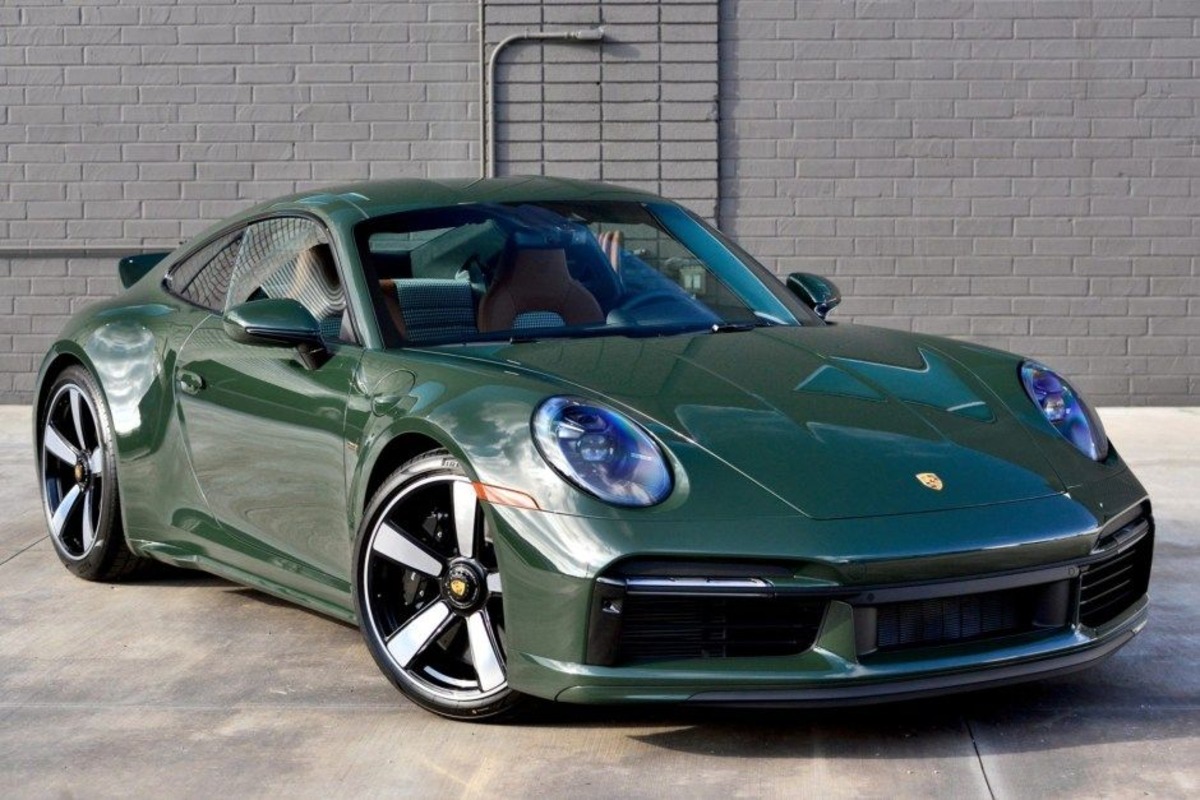When it comes to driving at high speeds, not all cars behave the same. Some vehicles give drivers unwavering confidence with a sense of stability, grip, and feedback that make highway cruises or track days feel almost effortless. These cars “stay planted,” a term often used by enthusiasts to describe vehicles that maintain composure, resist lift, and feel connected to the road even at triple-digit speeds.
High-speed stability is influenced by several engineering factors, including suspension geometry, chassis stiffness, center of gravity, aerodynamic design, and weight distribution. Cars that get it right feel like they’re hugging the pavement, never unsettling their occupants even when the scenery is flying past at 100+ mph.
On the flip side, some cars don’t inspire confidence as speeds rise. These are the floaty ones — vehicles that start to feel loose, unresponsive, or disconnected from the road. “Floatiness” is usually the result of soft suspension tuning, poor aerodynamics, imprecise steering, or a lack of downforce.
It can be particularly unnerving during highway lane changes or sudden maneuvers at speed, where the car may sway or feel vague, compromising driver control. Floaty cars are not necessarily unsafe, but they’re less suited for spirited or high-speed driving and often prioritize comfort or cost over performance.
This article takes a close look at five cars that remain impressively planted at high speeds, followed by five that tend to feel floaty once they’re pushed beyond moderate cruising velocities. While each car has its strengths and limitations, these categorizations highlight a key aspect of driving dynamics that every enthusiast — and even everyday drivers — should consider when choosing a vehicle.
Whether you’re a weekend warrior on the autobahn or simply want reassurance during fast highway travel, understanding how a car behaves at speed can make a world of difference in your confidence and enjoyment behind the wheel.
Also Read: 5 Cars With Fast Touchscreens and 5 That Lag Like Old Phones
5 Cars That Stay Planted at High Speed
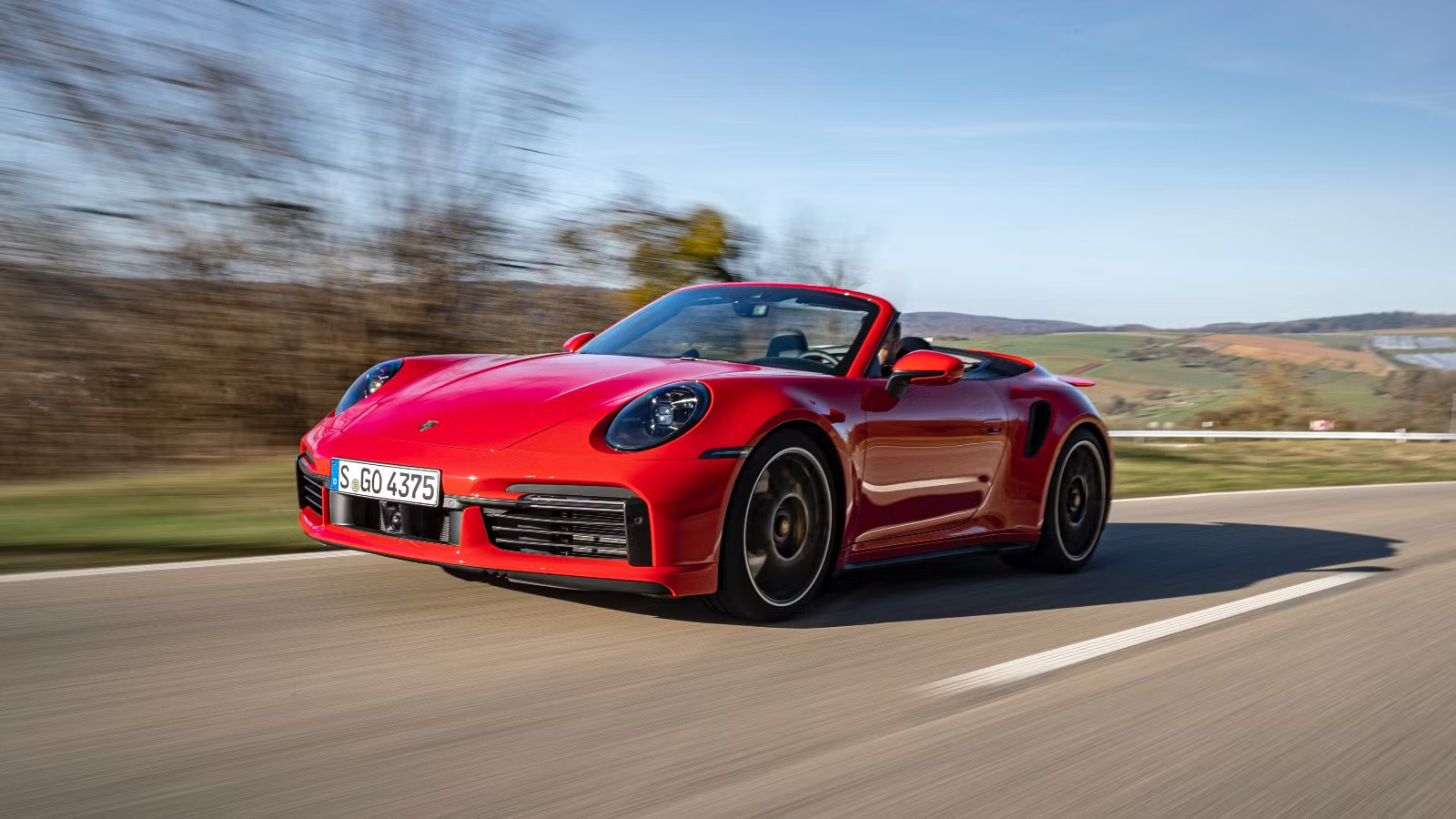
1. Porsche 911 (992 Generation)
The Porsche 911, particularly in its latest 992 generation, is a masterclass in high-speed stability. Years of evolution have fine-tuned its iconic rear-engine platform into a tool of surgical precision. What makes the 911 stay so remarkably composed is a combination of active aerodynamics, low center of gravity, and rear-wheel or all-wheel drive options that enhance grip and balance.
At speeds well above 100 mph, the adaptive spoiler deploys to create extra downforce, pressing the car onto the tarmac. The 911 never feels twitchy or light; instead, it provides direct, confidence-inspiring feedback through the steering wheel and chassis.
The sophisticated suspension setup also plays a huge role. Porsche’s PASM (Porsche Active Suspension Management) adapts to driving conditions in real time, helping the 911 remain flat and composed during sudden changes in direction or elevation.
Even at autobahn speeds, the car feels tightly wound, giving drivers the ability to change lanes or make corrections with minimal body motion. It’s equally at home on a twisty mountain road or a long, empty stretch of interstate, showcasing a balance that few other sports cars can match.
Inside the cabin, the driver experiences a level of calm that belies the velocity. The road noise is minimal, vibrations are well-damped, and the steering delivers micro-adjustments with surgical clarity. This combination of mechanical grip, aerodynamic finesse, and dynamic damping makes the 911 one of the most planted-feeling road cars at speed. It may be expensive, but its high-speed poise is proof that Porsche engineering pays off where it counts.
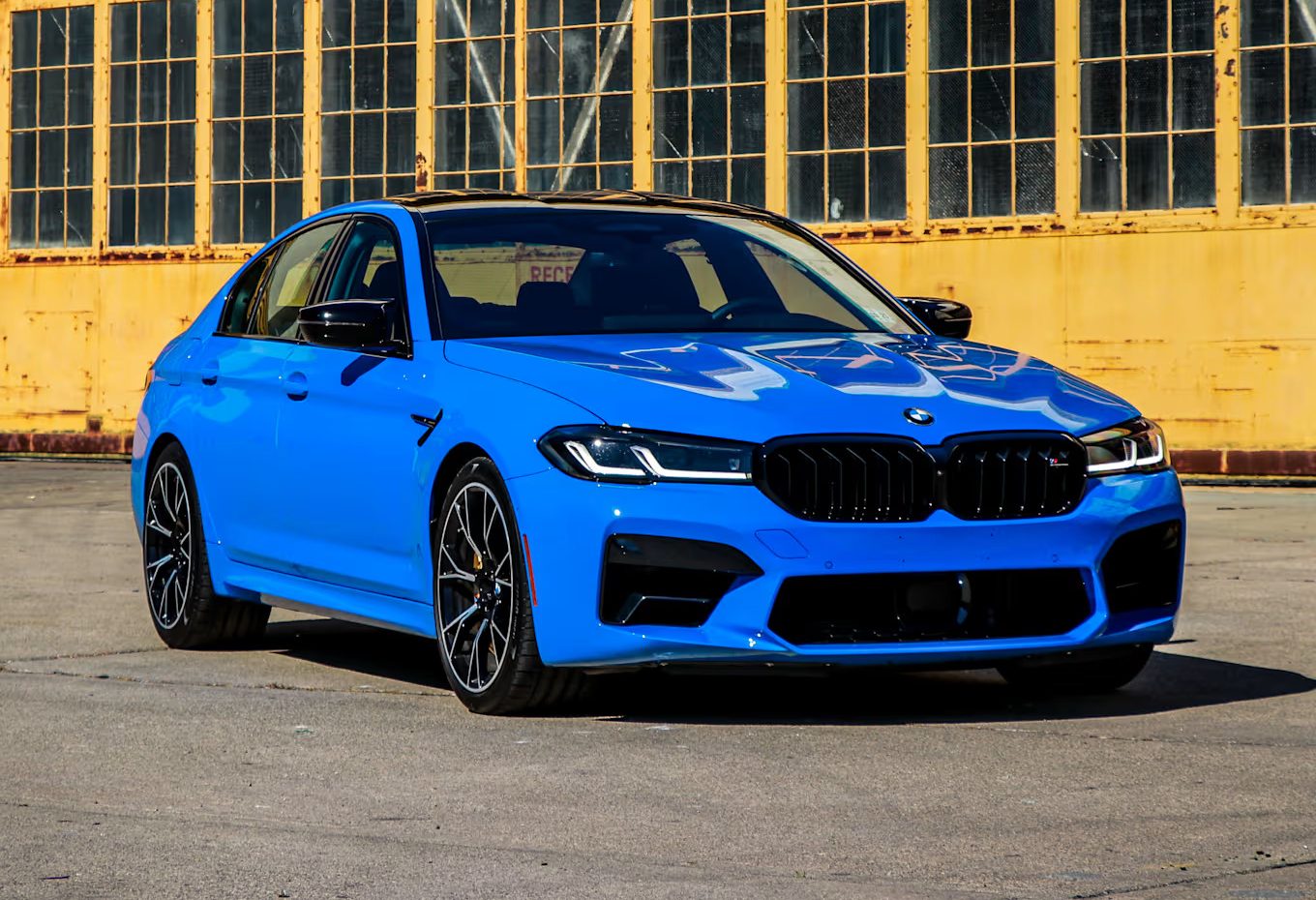
2. BMW M5 Competition (F90)
The BMW M5 Competition offers a different approach to high-speed stability, combining brutal power with luxury and advanced all-wheel-drive technology. The F90 generation M5 uses a 617-horsepower twin-turbo V8 to hurtle itself down the highway with absurd urgency, but it never feels out of control. Thanks to BMW’s M xDrive system, the power is distributed intelligently between all four wheels, drastically reducing wheel slip and keeping the car glued to the asphalt.
One of the standout features that makes the M5 feel so planted is its electronically controlled suspension. The car reads the road continuously, adjusting damping in milliseconds to ensure a flat ride. It leans very little in corners, and even at 150+ mph, the car feels as if it’s moving through thick air, stable, dense, and unwavering. The steering, while not as communicative as older analog M cars, is precise enough to make small corrections without any delay or unpredictability.
The M5’s long wheelbase, stiff chassis, and low ride height also contribute to its stability. Unlike many sedans that begin to feel floaty or light at high speeds, the M5 hunkers down and settles in. Its blend of straight-line prowess and composure in fast corners makes it not just a luxury cruiser but a formidable track tool. Few cars combine raw acceleration and high-speed assurance like this German missile.
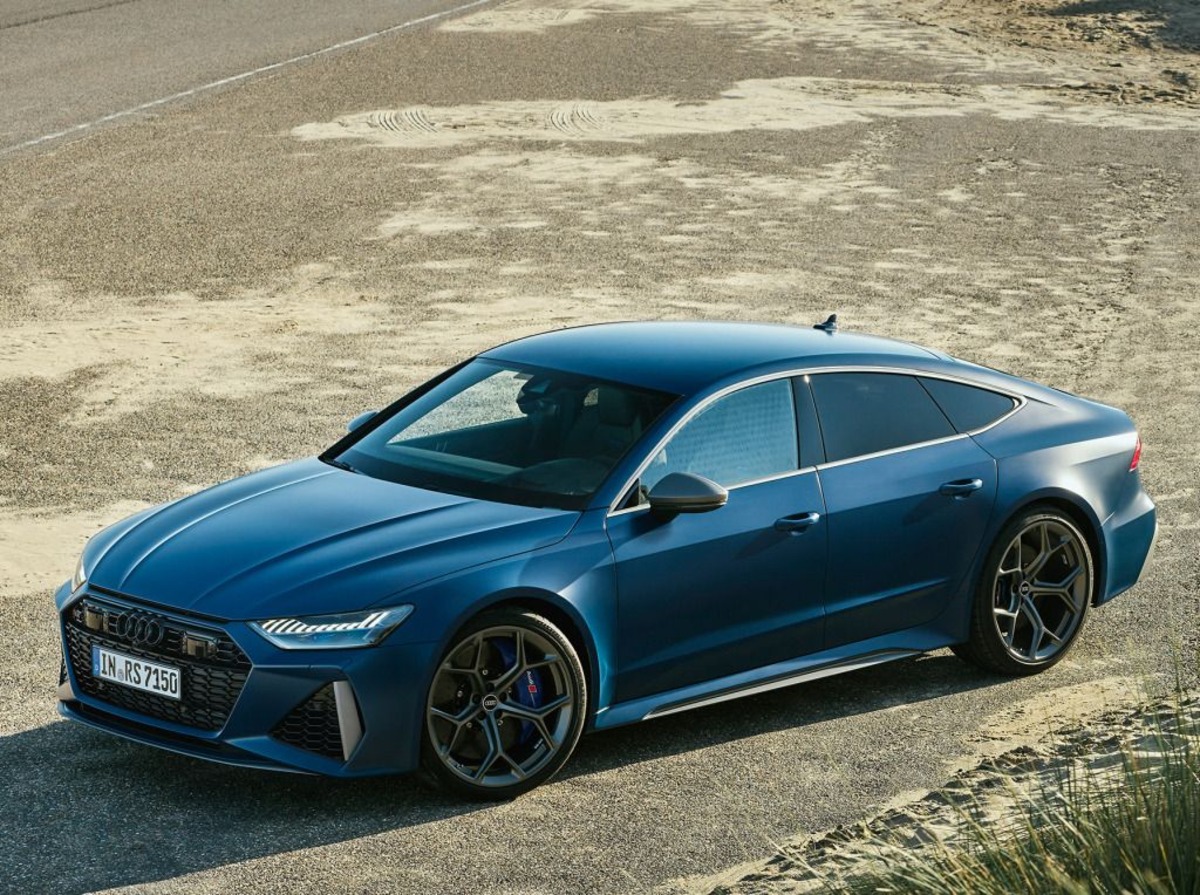
3. Audi RS7 Sportback
The Audi RS7 is another German powerhouse that excels in high-speed stability, delivering a grand touring experience wrapped in a sleek, aggressive four-door coupe body. Its 4.0-liter twin-turbocharged V8, paired with Audi’s legendary Quattro all-wheel-drive system, makes for explosive performance, but the way it maintains composure at speed is what truly impresses. With active suspension and rear-wheel steering, the RS7 feels smaller and more agile than its dimensions suggest.
Audi’s engineers have tuned the car for stability above all else. Aerodynamic refinement helps reduce lift at high speeds, while adaptive dampers keep the body flat and confident. Even at 120 mph, the RS7 doesn’t exhibit any sign of nervousness. Steering inputs are translated directly to the road, and the wide stance keeps it firmly planted through fast sweepers or straight-line blasts. Lane changes are crisp, never floaty or uncertain.
Inside, the car’s plush yet purposeful interior creates a cocooned experience. The quiet cabin, tight suspension, and unwavering directional stability make it feel like a luxury bullet train. The RS7 is a car that invites high-speed travel, reassuring the driver with every passing mile. It’s not as raw or communicative as a sports car, but for covering serious ground at speed, it’s a near-perfect blend of poise and power.
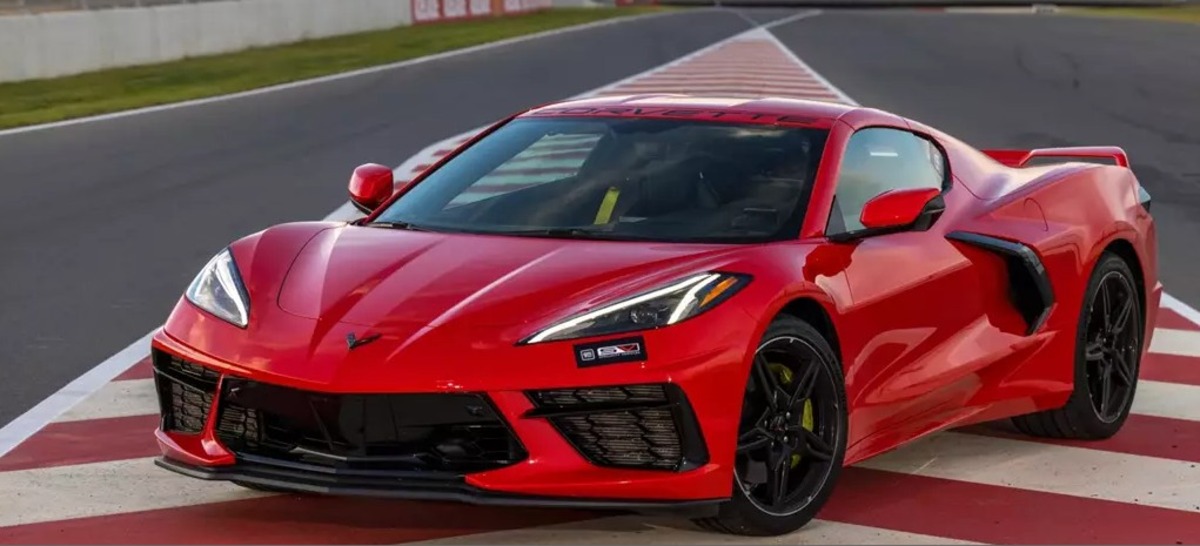
4. Chevrolet Corvette C8
The mid-engine layout of the C8 Corvette marks a radical departure from the traditional front-engine Vette formula, and it pays dividends in high-speed stability. By relocating the engine behind the driver, Chevrolet achieved a lower polar moment of inertia and better weight distribution, both of which enhance control and grip. The C8 feels much more European in character, with a chassis that thrives on speed and responds predictably to inputs.
Aerodynamic refinement is also key here. The C8 uses side intakes, a flat underbody, and a discreet rear spoiler to manage airflow efficiently, generating usable downforce without compromising drag.
This means that at 130 mph, the car feels as composed as it does at 70. There’s no unsettling lift, no vague steering — just a sense of connectedness and purpose. It makes highway driving a pleasure and backroad thrashing even more fun.
Chevy also fitted the C8 with their version of magnetic ride control, one of the best damping systems in the world. It can instantly adjust the shock absorbers to changing conditions, giving the C8 a dual personality: soft and forgiving in tour mode, tight and razor-sharp in track mode.
At high speeds, this system is particularly effective, preventing pitch or dive while keeping the car flat through long sweepers. The result is a Corvette that finally matches its European counterparts not just in speed but in composure.
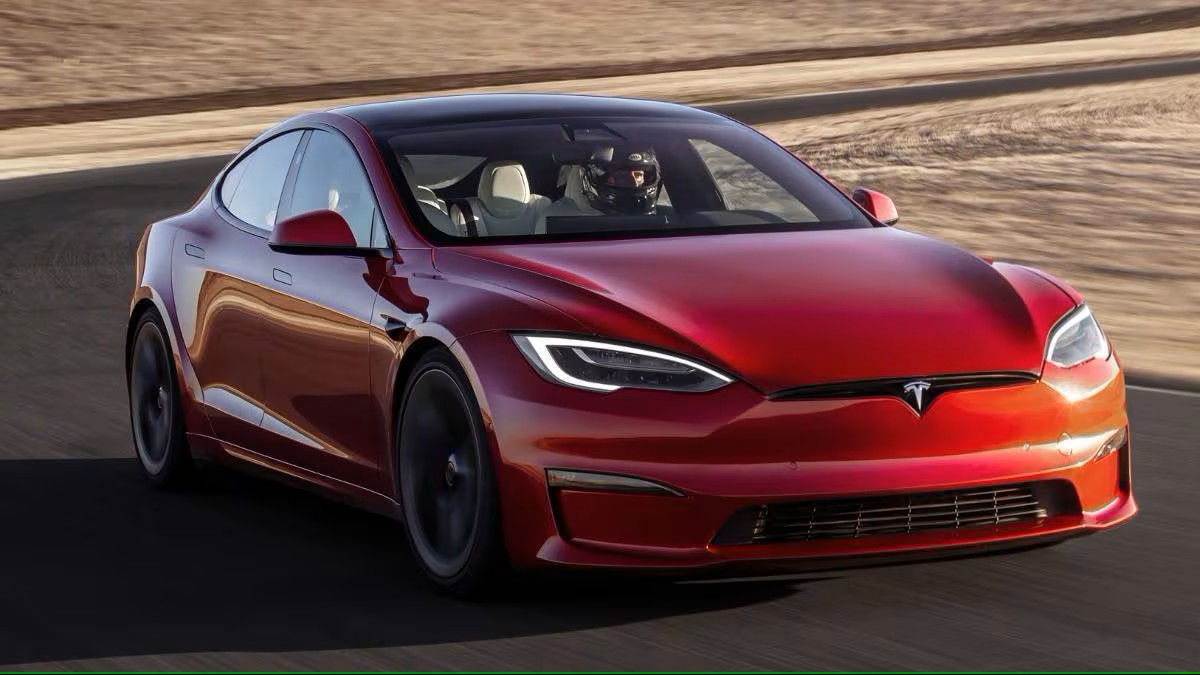
5. Tesla Model S Plaid
While not a traditional performance car in the ICE sense, the Tesla Model S Plaid earns its place here because of how shockingly composed it feels at insane speeds. This all-electric powerhouse can hit 60 mph in under two seconds and reach top speeds north of 200 mph — yet it remains eerily calm while doing it. The dual (or tri-) motor all-wheel-drive layout distributes torque precisely, ensuring grip even when the power delivery is instantaneous.
Tesla’s low center of gravity — thanks to the floor-mounted battery pack — contributes significantly to the car’s planted feel. Even in aggressive acceleration or during high-speed lane changes, the car stays level, resisting body roll and lift. The steering, while somewhat numb, remains accurate and responsive, and the wide tires provide a solid contact patch that anchors the vehicle at velocity.
Unlike some performance cars that feel like they’re hunting apexes, the Plaid feels more like a high-speed train: straight-line domination with quiet, unshakable focus. The car’s stability at speed is almost eerie, lacking the drama or vibration of traditional high-performance vehicles. While it’s not meant for track days or canyon carving, its straight-line high-speed composure is undeniable and deeply impressive.
5 Cars That Feel Floaty at High Speed
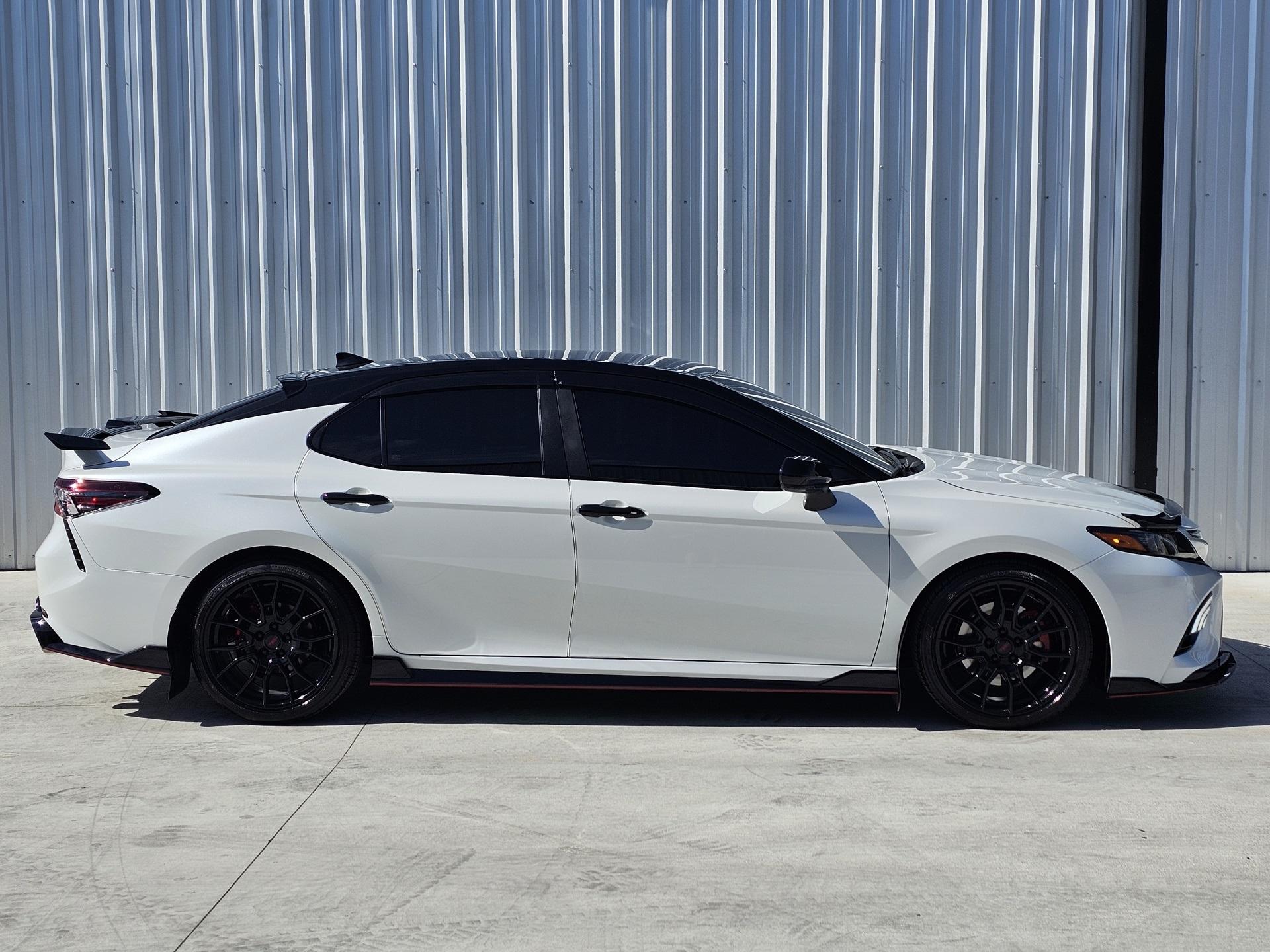
1. Toyota Camry (Non-TRD Models)
The Toyota Camry is a reliable, comfortable, and well-built sedan, but high-speed stability is not its forte. Designed primarily for suburban commutes and daily errands, the Camry prioritizes ride comfort over dynamic control. At speeds above 80 mph, the suspension starts to feel soft and the car exhibits a noticeable amount of float, especially over dips or expansion
joints. Steering feel becomes vague, requiring constant corrections to stay in the lane.
This floatiness is a direct result of the Camry’s comfort-tuned suspension. While it works wonders over potholes and in city traffic, it’s not designed to keep the car tightly planted at speed. The body can oscillate or feel unsettled when making quick directional changes. The tires are also typically chosen for economy rather than grip, further reducing high-speed confidence.
To be fair, most Camry buyers aren’t planning on frequent highway pulls or high-speed runs. But for those who occasionally find themselves traveling fast, especially in windy conditions or on uneven pavement, the car’s disconnected, floaty feel can be unsettling. If you’re looking for a more composed version, the TRD trim tightens up the suspension considerably, but the standard models remain floaty beyond moderate speeds.

2. Jeep Grand Cherokee (Non-SRT Models)
The standard Jeep Grand Cherokee offers a plush, SUV-oriented ride, but its suspension and weight distribution do it no favors at higher speeds. While it’s composed enough at 65–75 mph, push it past that, and the chassis begins to feel disconnected from the road. The steering becomes lighter and less precise, while body motion over undulating highways feels exaggerated, giving passengers the impression of “floating” or wallowing.
Part of this behavior comes down to the vehicle’s design priorities. The Grand Cherokee is meant to offer comfort and light off-road capability, not high-speed confidence. It rides high, has a relatively soft suspension tune, and emphasizes ride quality over firm body control. On poorly maintained highways or windy conditions, it can sway and feel as though it’s being nudged off-center.
Moreover, the higher center of gravity works against stability. Unlike performance SUVs that use adaptive dampers or rear-wheel steering to control motion, base models of the Grand Cherokee rely on passive components. The result is a ride that’s serene at city speeds but unsettled and floaty on long highway runs. If you want a Grand Cherokee that feels planted, the SRT or Trackhawk models are significantly more composed, but they’re an entirely different price and performance bracket.
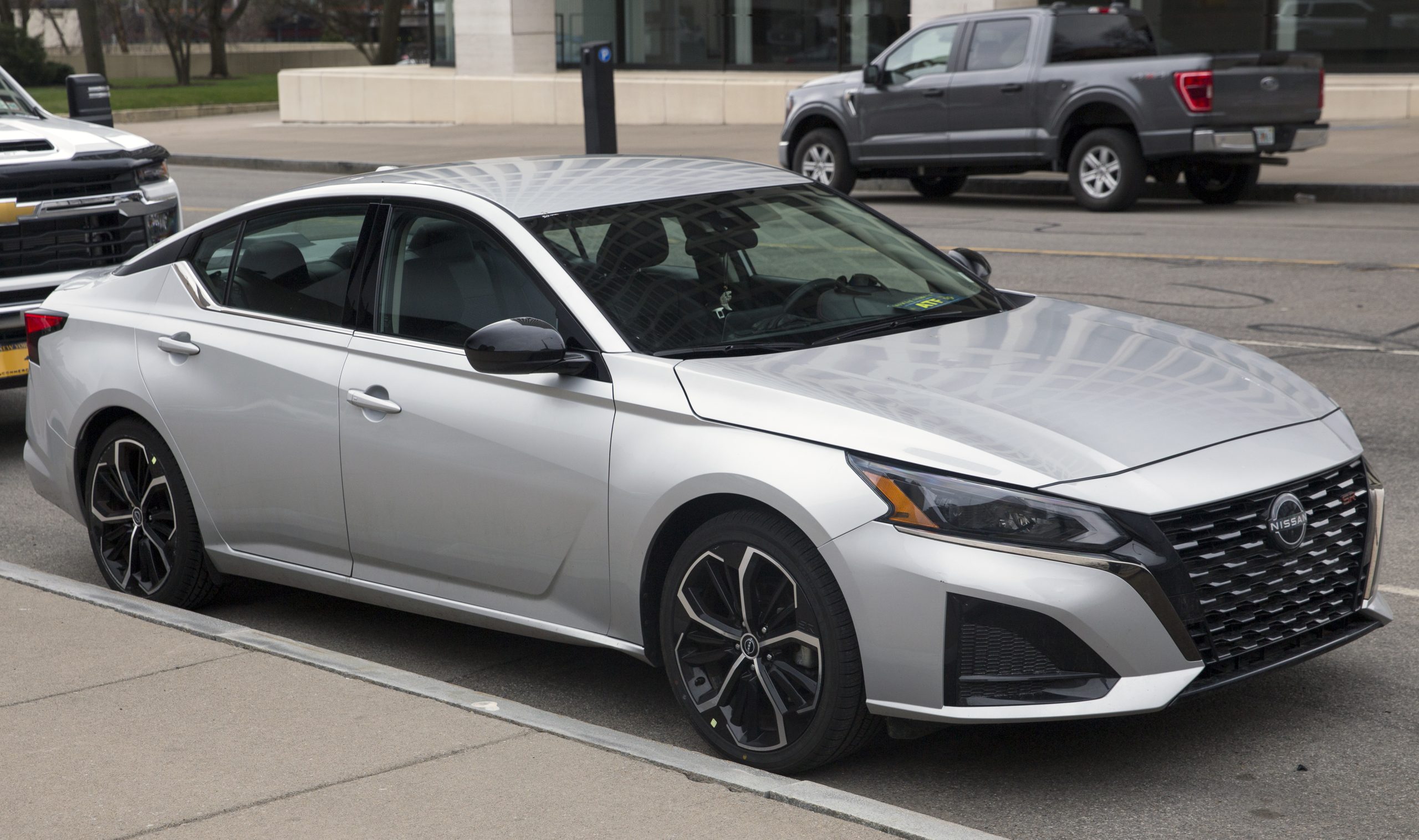
3. Nissan Altima
The Nissan Altima occupies a similar space to the Camry — built for comfort and efficiency rather than spirited driving. While newer Altimas have improved significantly in chassis tuning and design, they still exhibit a floaty character when pushed to higher speeds. Above 80 mph, the steering starts to feel isolated, with a lack of road feedback that makes it difficult to judge the car’s exact behavior in real time.
The soft suspension tuning, meant to cushion road imperfections, begins to show its downside at speed. Lane changes can feel delayed or muted, with a sense that the body is still catching up to the driver’s input. Combined with light steering and limited chassis stiffness, this results in a car that doesn’t instill confidence during fast driving or emergency maneuvers on the highway.
For the average commuter, this isn’t an issue. Most Altima owners are not testing the upper limits of the speedometer. But compared to more planted sedans, the Altima can feel vague and floaty when driven aggressively. The optional all-wheel drive helps marginally in poor weather, but it doesn’t transform the car into a high-speed cruiser. For that, Nissan’s own Maxima or performance-tuned models are better bets.
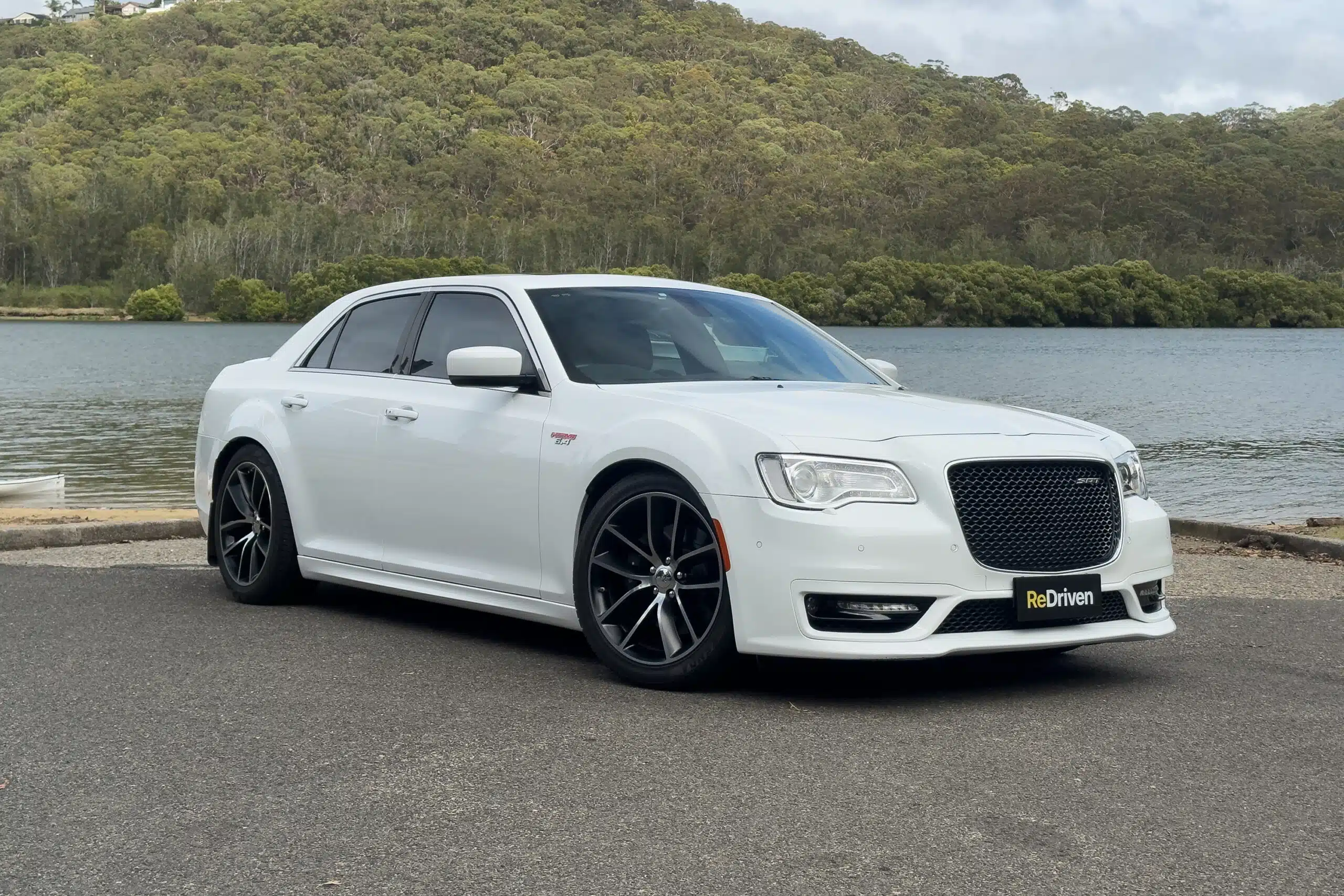
4. Chrysler 300 (Base Models)
The Chrysler 300 is known for its big American sedan feel — soft, spacious, and comfort-oriented. Unfortunately, these same characteristics contribute to a floaty experience at high speeds, especially in the base trims without performance enhancements. The long wheelbase and heavy curb weight contribute to a sense of isolation from the road, which, while comfortable in a straight line, leads to an overly soft, underdamped ride.
Once the speed climbs, the suspension begins to allow more vertical movement, making the car feel like it’s bouncing slightly over road imperfections. The body roll during quick direction changes can also be pronounced, giving passengers the sensation of delay between input and reaction. The steering, meanwhile, is tuned for ease rather than feel, meaning less road communication, especially at highway speeds.
Even though the 300 is a full-size sedan, it doesn’t benefit from the tight European-like control of similarly sized competitors. If you want a version of this car that stays more planted, the 300S or the now-discontinued SRT8 trims are more capable. But the standard V6 models, despite their cushy ride, feel more like grand tourers of decades past than precision high-speed machines.
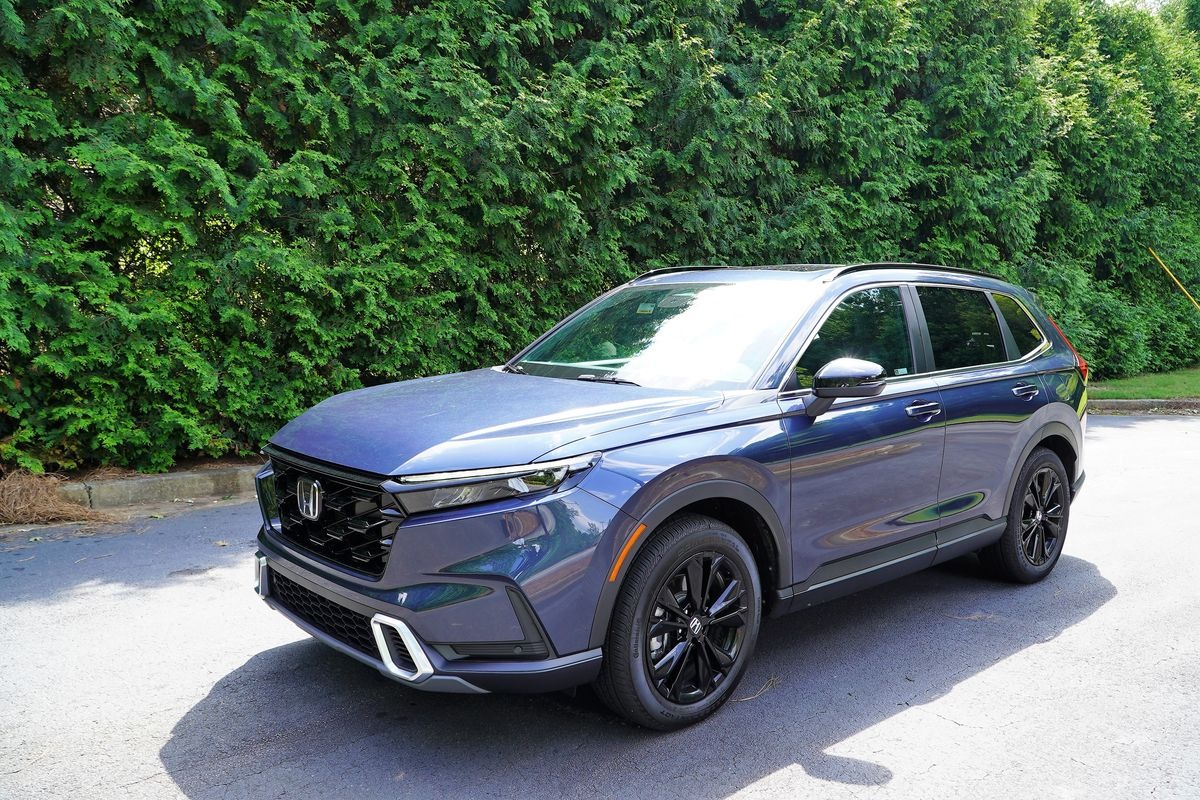
5. Honda CR-V
The Honda CR-V is one of the most popular crossovers on the road — and for good reason. It offers exceptional fuel economy, practicality, and reliability. But high-speed dynamics is not its strong suit. The CR-V rides higher than a typical sedan, with a suspension setup tuned heavily for comfort and softness. As a result, it can feel floaty and underdamped when cruising above 80 mph.
At those speeds, the CR-V’s light steering, soft shock absorption, and tall stance combine to create a vague driving experience. Road imperfections are not handled with the same confidence as in more performance-oriented crossovers. There’s also noticeable wind noise and some lift effect that makes the steering even less predictable during crosswinds or rapid lane changes.
It’s worth noting that the CR-V isn’t dangerous or unstable — it’s simply not designed to maintain the level of poise required for high-speed driving. In urban and suburban environments, it feels planted enough.
But for long-distance, high-speed highway cruising, it lacks the controlled body motion and road feel that more refined (and often more expensive) crossovers provide. If you’re someone who frequently travels at high speeds, alternatives like the Mazda CX-5 or Subaru Outback may offer a more grounded feel.
Also Read: 5 Cars With Digital Dashboards That Age Well and 5 That Glitch Out
High-speed stability is one of the most telling aspects of a car’s engineering. It reveals how well the vehicle is built, how thoughtfully its suspension and aerodynamics are tuned, and how much confidence it can give the driver when the speed rises and the road demands more. The difference between a car that feels planted and one that feels floaty isn’t just about driving pleasure — it’s about control, predictability, and safety.
The vehicles that stay planted at high speeds, like the Porsche 911, BMW M5 Competition, Audi RS7, Chevrolet Corvette C8, and Tesla Model S Plaid, offer a sense of calm precision.
They absorb imperfections, resist body roll, and remain obedient to the driver’s inputs even as speeds escalate. These cars are the result of focused design, where stability and feedback are treated as essential to the driving experience. They make high-speed driving feel natural, not stressful, encouraging the driver to stay engaged and confident mile after mile.
In contrast, vehicles that feel floaty — including the Toyota Camry, Nissan Altima, Jeep Grand Cherokee, Chrysler 300, and Honda CR-V — prioritize softness, comfort, and ease of use. While this makes them excellent choices for commuting and everyday family duties, they can begin to feel vague or unsettled at higher speeds.
Their soft suspensions and light steering tuning are perfect for city streets and relaxed cruising, but they sacrifice the planted, controlled sensation that some drivers value when the pace quickens or the road gets demanding.
The right vehicle depends on your driving needs and priorities. Not everyone requires razor-sharp handling or autobahn-grade stability, and there’s nothing wrong with choosing a floatier car for the sake of comfort. But if confidence, feedback, and control at speed matter to you, it’s worth paying attention to how a car behaves beyond the daily crawl.
In the end, a planted car connects you to the road — and to the experience of driving itself. A floaty one, while comfortable, reminds you that you’re simply along for the ride. Choose the one that fits your journey.

